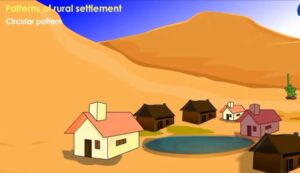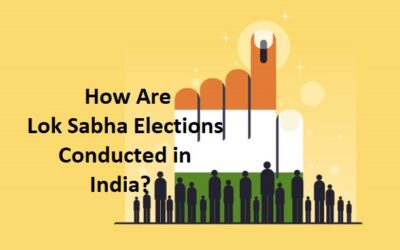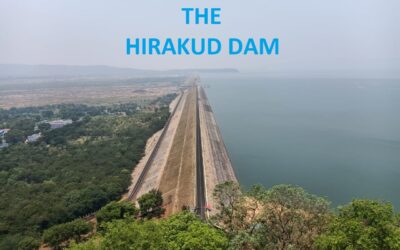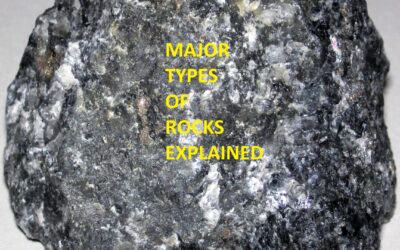Class VII Social Science Term II Geography: Activity Based Lesson Plan – As Per CBSE Guidelines
Class VII Term II Geography lesson plan helps you to plan your syllabus well in advance. You are more focused if you have Class VII Term II Geography lesson plan at the beginning of the session. You can easily use teaching aids and conduct tests if you have Class VII Term II Geography lesson plan with you. Class seventh social science is based on concepts, therefore for better interaction with students, social science lesson plan is must. Many new teachers face problems in designing the social science lesson plan during their initial years.
This post mainly deals with a detailed Class VII Term II Geography lesson plan
Hope, Social science lesson plan helps all social science teachers teaching in class VII.
Here, I have tried to include objective, specific objective, method of teaching, teaching aids, activities, home-work planned, learning outcome and remedial measures in my social science lesson plan for class VII.
Social Science Term II Geography: Activity Based Lesson Plan For The Month Of October – November

Class VII Term II Geography lesson plan
Topics covered:
Geography:
- Chapter 6. Natural Vegetation and Wild Life
- Chapter 7. Human Environment – Settlement, Transportation and Communication
__________________________________________________________________________________________________
Class VII Social Science Term II Geography Lesson Plan – For The Month Of October – November
Chapter 6 Natural Vegetation and Wild Life
General Objective:
- To develop keen observation, imagination and interest in the subject.
- To apply the knowledge practically in real life.
- Developing scientific temperament among the students.
Specific Objective:
- Students will acquire knowledge about the different types of Natural vegetation and wildlife.
- They will also know about the climatic conditions required for their growth and survival.
- Students will also learn about the importance of Natural vegetation and wild life.
Checking Previous Knowledge:
The teacher checks the previous knowledge of the students by asking a question.
“What is the difference between crops and Natural Vegetation.”
Introducing Topic:
The teacher introduces the topic by asking basic questions like:
Teacher: What all things we need to survive?
Student’s response: Air, water, food etc.
Teacher: what do we get from the trees?
Student’s answer: Oxygen, fruits, wood etc.
Teacher: Where do the wild animals live?
Student’s answer: Forests, Jungle
Teacher: Do all trees look same?
Student: No.
Teacher: What makes it different?
Students are unable to answer this question.
Statement of Topic
Now, the teacher will announce the topic. Today we are going to study about “Natural Vegetation and Wildlife.”
Teaching Method: Story Telling
There was a forest with varieties of trees and wild animals.
All lived happily.
One day the small plants saw a man walking in the forest.
They got afraid as they have never seen a creature like this in the forest.
So, small plants decided to inform to their parents (big trees).
As they informed, the bigger trees said don’t be afraid, we are there.
These creatures are called human beings. Don’t be afraid of them. They are our very good friends. Go and play……
The small trees after listening to their parents returned back and started playing.
The second day:
Next day, when the small plants were playing, they once again saw man with a piece of iron in his hands.
They got afraid and decided to inform to their parents.
The parents again convinced the younger ones by saying
These creatures are called human beings. Don’t be afraid of them. They are our very good friends. Go and play…… ”
The small trees after listening to their parents returned back and started playing.
The third day:
Third day, when the small plants were playing, they noticed the man was sitting on a rock and sharpening the iron.
Once again they got afraid, started crying and decided to inform to their parents.
The parents again convinced the younger ones by saying
Oh O, Why do you get afraid? These creatures are called human beings. Don’t be afraid of them. They are our very good friends. Go and play…… ”
The small plants after listening to their parents returned back and started playing.
The fourth day:
Fourth day, while playing in the jungle, small plants saw that the man is carrying a sharp tool (Axe) on his shoulder and looking towards the trees.
As usual, small plants got afraid and decided to inform to their parents.
But this time they saw that the bigger trees were crying.
Today small plants asked, Mom – Dad why are you crying?
Parents said, today one of us will be killed by this man.
The younger once said No mom-dad, please don’t cry. They are Human beings. Don’t be afraid of them. They are our very good friends. They will never cause any harm to us. Please stop crying.
An old tree replied, today no one can save us and one of us will definitely be killed.
Small plants asked, but why?
Parents replied, because some one from us has joined hands with our enemy. (wood got fixed with iron)
Moral of the story:
“An insider does the maximum damage.”
After narrating this story, the students will have sympathy towards Natural vegetation.
Taking the advantage, the teacher starts explaining the chapter.
Teaching aids: Text Book, Black Board, Images and PPT
Technique: Interactive with common examples.
The teacher uses various methods to make the topic interesting by interacting with the children in the class.
By asking very simple questions, the teacher draws the attention of the class.
Also make sure that the children are involved in the discussion.
While interacting with the students, the teacher also tells about different types of trees in their surroundings.
The teacher also asks about pet and wild animals.
Content/ Teaching Points:
- Introduction
- Types of Natural Vegetation
- Tropical Evergreen Forests
- Tropical Deciduous forests
- Temperate Evergreen Forests
- Temperate Deciduous Forests
- Mediterranean Vegetation
- Coniferous Forests
Activity: Open Book Assessment
The teacher displays a chart.
Asks the students to match the Natural vegetation with the type of trees and wild animals.
COLUMN A TYPE OF VEGETATION | COLUMN B TYPES OF TREES FOUND | COLUMN C TYPES OF ANIMALS FOUND |
Tropical Evergreen Forests
| Sal, Shisham, Sandalwood, Khair |
goats, sheep, rabbits, jackals, and lynx
|
Tropical Deciduous forests |
Pines, spruces, firs, and larches | Elephants Monkeys Lemur Deer One-Horned Rhino (Assam, West Bengal) Birds Bats Sloth, Scorpions, Snails etc. |
Temperate Deciduous Forests |
ebony, mahogany, rosewood and rubber
| wolves,bears, cats, moose, elk, porcupines, deer, squirrels, birds, insects, and snakes |
Mediterranean Vegetation
| Tendu, Palas, Amaltas, Bel, Khair | Four horned antelope, Chinkara, Black buck, wild dog, |
Coniferous Forests
| olive, pine trees, junipers, cypresses | elephants, monkeys, tigers, giraffes. Mice, rabbits, foxes, deer |
Match column A with Column B and C.
After 10 minutes, the teacher asks the students to interchange their notebooks.
Now, correct it and award marks out of 10.
Class work:
i) Objective and short answer type questions will be done.
ii) Long answer type questions will be discussed and done in the class.
Home-work:
Draw or paste the pictures of any two animals found in different types of forests.
a) Tropical Evergreen Forests
b) Tropical Deciduous forests
c) Temperate Deciduous Forests
d) Mediterranean Forest
e) Coniferous Forests
Values imparted:
Social responsibility
Sensitization towards Plants, trees and animals.
Conservation.
Multidisciplinary Integrated learning:
- Map skill
- Hindi: write slogans on save trees and wild animals.
- Art: Draw any one type of forest with animals found in it.
- Science: What will be the effect on climate if the trees are cut recklessly?
- English: write an autobiography of a tree/ wild animal.
- Pol. Sc: Make strict laws on the conservation of trees and wild animals.
Assessment Criteria:
Indicators
- Relevance of Content
- Presentation of information gathered
- Awareness of the information gathered
- Logical Approach
- Creativeness
- Analytical Skills
Learning Outcome:
After the completion of this chapter, students will be able to
Exhibit clear understanding of various terms like Natural vegetation, virgin vegetation, ecosystem, Biome etc.
Sensitize peers about conservation of flora and fauna.
demonstrate beliefs in peaceful coexistence of human beings and flora and fauna.
get familiarized with effects of climatic change on biodiversity.
develop clear understanding of various types of vegetation and wildlife
Remedial Measure:
Each One – Teach One.
Children sitting on the left side of the row will explain the chapter to the children sitting on their right.
Class VII Social Science Term II Geography Lesson Plan – For The Month Of October – November
Chapter 7. Human Environment – Settlement, Transportation and Communication
General Objective:
- To develop students interest in the subject.
- To apply the knowledge practically in real life.
- Developing scientific temperament among the students.
- To enhance student’s learning ability.
Specific Objective:
- Students will acquire knowledge about the Human Environment.
- They will also know about the Human conditions required for their growth and survival.
- Students will also learn about the importance of Transportation and Communication.
Checking Previous Knowledge:
The teacher checks the previous knowledge of the students by asking a question.
Where would people love to settle – Mountains, deserts, near the river banks or hilly regions. Why?
Introducing Topic:
The teacher introduces the topic by asking basic questions like:
Teacher: Where do early men used to live?
Student’s response: Forests, Caves.
Teacher: On the banks of which river was the first civilization found?
Student’s answer: Sindhu river, Indus river, Indus valley civilization.
Teacher: Did people lived alone or in group near Indus river?
Student’s answer: Group.
Teacher: What do you mean by settlement?
Students are unable to answer this question.
Statement of Topic
O.K. So, today we will discuss about Human settlement.
Introducing Topic: story telling method.
One day a group of people decided to settle at one place.
One of them told that let’s settle on Himalayas.
It is high as well as safe.
All of them agreed and went to Himalayas.
But, they found that during winter it was extremely cold.
Moreover, they could nor grow any crop because of infertile soil.
So, they decided to change their location.
shifting to a new location:
All of them came down from the Himalayas and continued to search for a better location.
They saw a herd of goats and sheep.
They were very excited to see these animals.
Fortunately, they reached near the watery spot and decided to settle there.
But, after a few months, the day temperature started increasing and nights became extremely cold.
Soon the water also disappeared (evaporated) from the small watery spot.
There was sand all around. No trees, no grass, no animals and no food to eat.
They were not happy with this location as well and decided to shift immediately.
shifting to a new location:
With all their luggage they shifted to a place which was high but flat at the top.
They found this place to be better than the other two.
It was neither very hot nor very cold, but, the land was somewhat hard and rocky.
Moreover, there were many trees also all around.
There was also a river nearby.
But, the problem was they could not use the river because the river used to make frequent waterfalls.
Also they noticed, that the river has enough water during rainy season but dried up during summers.
so, they once again decided to explore a new place.
shifting to a new location:
This time they reached on the bank of a river.
The water was pure and the soil was soft and fertile.
Even the land was flat.
Near the river side, there were many fruit bearing trees.
Here, we can grow crops, enjoy fresh water, construct house and easily pull our cart on flat land.
Even the climate is better and there is fresh breeze from the river side.
Finally, they decided to settle there permanently.
Moral of the story:
Plains near the river side provide the most favorable conditions for human settlement
After listening to this story, the students will be curious to know more about human settlement.
Taking the advantage, the teacher starts explaining the chapter.
Teaching aids: Text Book, Black Board, Images and PPT
Technique: Interactive with common examples.
The teacher uses various methods to make the topic interesting by interacting with the children in the class.
By asking very simple questions, the teacher draws the attention of the class.
Also make sure that the children are involved in the discussion.
While interacting with the students, the teacher also tells about different types of settlements and means of transportation.
The teacher also asks the students where would you like to settle and why?
Content/ Teaching Points:
Human settlement
Factors which decide human settlement.
Types of settlement – Permanent and temporary
Roadways, Railways, Waterways and Airways.
Types of Communication types of communication
Activity: Open Book Assessment
The teacher conducts an open book test.
Students are asked to find out the answers from the text book and write in their copy.
Time: 20 minutes.
- What is settlement?
- What are the types of-settlements ?
- Which type of houses will you see in rural areas.
- What are the different types of transport.
- What do you understand by COMMUNICATION .
Class work:
i) Objective and short answer type questions will be done.
ii) Long answer type questions will be discussed and done in the class.
Home-work:
Draw or paste the pictures of different types of settlement.
Read about ELON MUSK’S VIRGIN HYPERLOOP
Values imparted:
Social responsibility at human settlement.
Sensitization towards local and global settlement.
Multidisciplinary Integrated learning:
- History: compare human settlement of early days with today.
- Art: Draw a scene of rural settlement.
- Science: How fast means of transportation and communication help in development of nation.
- English: How can we use and maintain public transport.
Other Activities:
Discuss and Debate
- Smart Phones – Good or Bad?
- Advantages and Disadvantages of the Internet
- Compare the Shape of Houses in the Himalayas, Desert and near Brahmaputra.
Assessment Criteria:
Indicators
- Relevance of Content
- Presentation of information gathered
- Awareness of the information gathered
- Logical Approach
- Creativeness
- Analytical Skills
Learning Outcome:
After the completion of this chapter, students will be able to
- explain the relationship between Natural environment and Human Settlement.
- appreciate the need of fast transport and communication for development of the country.
- learn about the new developments making today’s world a global society
Remedial Measure:
Pair and share
Children sitting on the left side of the row will explain the chapter to the children sitting on their right.
Class VII Social Science Term II Geography Lesson Plan – For The Month Of October – November
Conclusion:
I hope Social Science Lesson Plan of class VII will be of great help to the teachers.
Apart from this, this year CBSE has also integrated one state with the other.
You can also include it in your Social Science Lesson Plan. To get the idea on this you may click on the following link
Integrating Bihar with Tripura and Mizoram Under Ek Bharat Shreshtha Bharat
Integrating Chhattisgarh with Gujarat – Complete Guidance
Was this lesson plan helpful to you? Write your views in the comment box.





Sor plz prepare lesson plan on water also
sure Khushboo. Very soon you will find it on my website. Keep visiting and sharing shapingminds.in
This was detailed lesson plan which touched all important aspects of the lesson. Thank you Sir!
Welcome Sheetal.
unable to edit sir
Need the lesson plan for all the social lessons for class 6 to 8
You will get the lesson plans of all the chapters from social science (6 to 8) on my website. Just type the name of the chapter and lesson plan. e.g. the solar system lesson plan (enter) ….